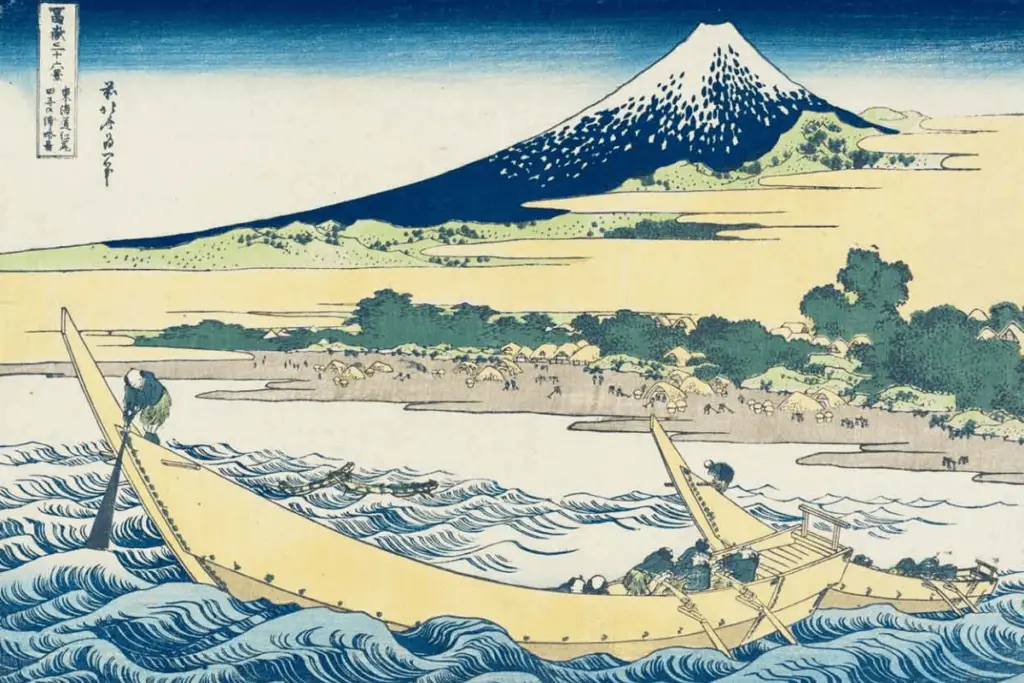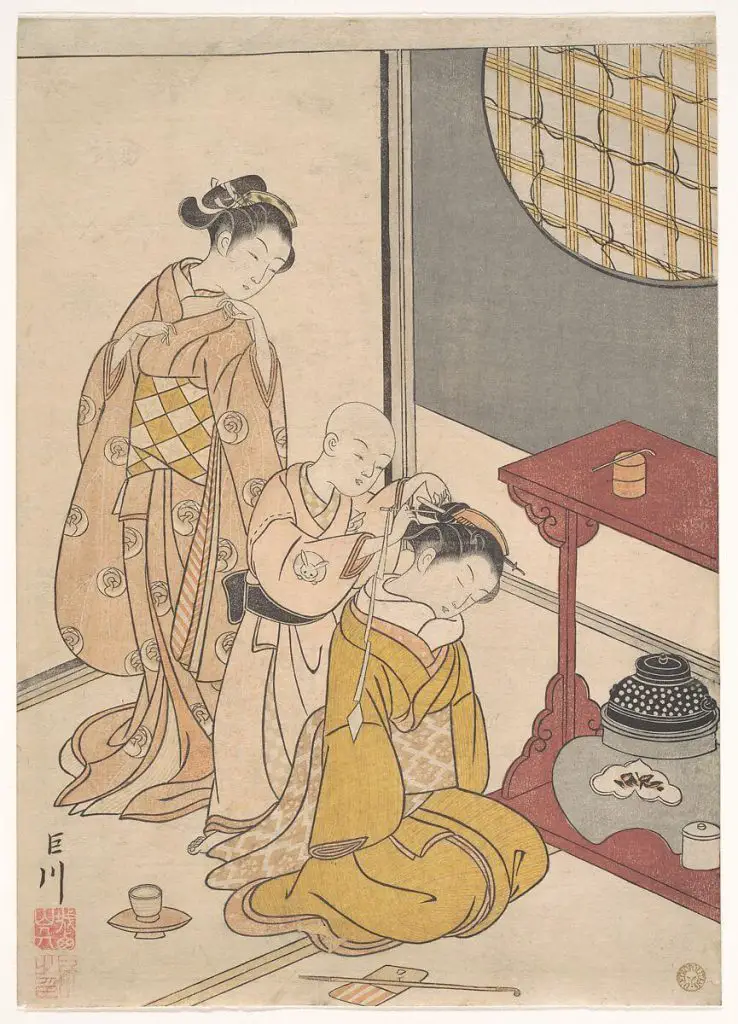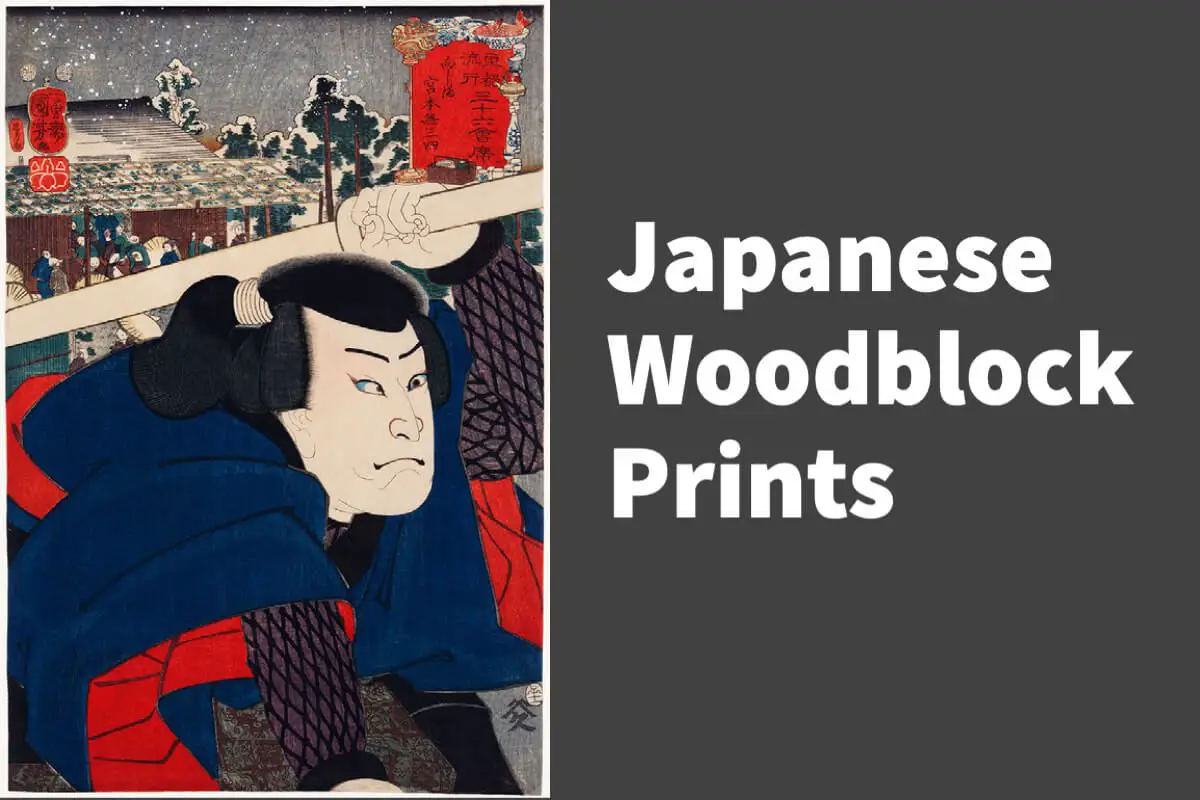I have always been a great fan of Japanese woodblock print artists. I find the woodblock print artists t to be excellent in perfecting the woodblock print techniques.
The Japanese woodblock prints had many advantages and were beneficial technology for its day. The more the Japanese publishers began to print woodblock art, the easier it became to print more complicated and intricate designs. They were then able to sell this duplicated art to the masses.
Table of Contents
- The Mastery and Merits of Japanese Woodblock Prints
- Frequently Asked Questions
- Related Content
The Mastery and Merits of Japanese Woodblock Prints
My admiration for Japanese woodblock print artists runs deep, particularly for their remarkable skill in perfecting the woodblock printing technique. These artists honed this craft to an exceptional level and explored its numerous advantages, making it a groundbreaking technology for its era.
The evolution of woodblock printing in Japan led to increasingly complex and intricate designs, enabling publishers to replicate these artworks efficiently. This advancement democratized art, allowing these exquisite pieces to be shared and appreciated by a wider audience, far beyond the elite circles of traditional art collectors.
The Japanese had an advantage in using and producing woodblock prints, which also helped them contribute to Japanese art for years to come. Read on as we explore some of the mastery and merits of Japanese woodblock print.

Japanese Woodblock Prints And Useful Print Technology
Japanese woodblock printing helped change the way printing was done. For its time, woodblock printing was an extremely useful technology, as perfected by the Japanese. The woodblock printing helped change how images, designs, and words would be printed on paper.
Japan did not invent woodblock printing; woodblock printing was invented in China in 7 BC or earlier. But we can say that the Japanese woodblock print artists helped refine and perfect this art form.
For a long time in many parts of the world, woodblocks were how printing was done. As a small child, I remember going to my father’s office and later to his college, where he taught printing.
His workshop contained numerous wooden boxes filled with metal types. This technology, used in his printing process, was quite similar to the woodblock printing techniques employed by the Japanese in their own printing methods.
Woodblock printing became such an essential part of Japanese culture that this type of art is still celebrated in Japan today. Many collectors and others are still collecting woodblock prints; there are many of these woodblock prints on display in major museums around the world.
Woodblock printing came to define and influence Japanese art.

Easy to Print Complicated Designs As Japanese Refined Art
As the Japanese began to refine the art of woodblock printing, it became easier for them to print more complicated designs, images, and other things. This is because woodblock printing used the technology of carving a block of wood, which was then painted with ink and then pressed against the paper.
This technique of carving the image, applying ink, and pressing the ink against the paper allowed the design to be printed. As the technique developed, different colors would have other blocks of ink.
Japanese printers made this easier as they refined and perfected this art form. More colors and intricate designs started to emerge on the woodblock prints. As long as the woodblock survived, the artwork could be reproduced using this printing method.
Japanese Woodblock Prints Allowed Duplication of Art
One of the great things about Japanese woodblock printing was that it allowed for the duplication of the art. For the 18th century, this was a forward way of using and thinking about art – art that could be duplicated and sold to the masses.
This ability to duplicate the art helped to set up new industries in Japan. The artist who did the art, the woodblock carvers who carved the blocks, and finally, the printer who would print the artwork.
Once the art was printed and distributed, Japanese merchants sprung up who sold the art to consumers. Most of the prints were single sheets mass-produced and sold by these street merchants for pennies.
It was not just art prints that were duplicated, but this also included some useful things as a calendar.
The ability to duplicate the woodblock prints allowed the art to be seen by many people. So, fans started to arise—people who loved and appreciated one artist over another or one artistic subject matter over another.
Being able to duplicate art when most of the art was only one original piece of art was very forward-thinking. In Europe, at the time, most of the art was original oil paintings that were painted for one person, usually the wealthy, and were only enjoyed by a very select few.
Japanese Woodblock Prints Allowed Art For Masses
Woodblock prints became art for the masses. Many Japanese could afford or at least see the woodblock prints sold around Japan.
As the Japanese could afford more types of woodblock print, the government, in an attempt to try to control the merchant class, would periodically issue a proclamation or decree restricting the prints’ size, themes, and materials.
The government did not want to see prints that they considered immoral or politically subversive in nature. Naturally, these kinds of restrictions would add more allure to these prints.
The government decrees did not stop the artist and their woodblock prints as the artists, carvers, printers, and merchants would find a way to work around them and continue selling and producing woodblock prints.
The Japanese had an advantage in how they could produce the prints; these artists also helped contribute to the technology of the day.
Global Recognition: The Presence of Japanese Woodblock Prints in Museums Around the World
The allure and influence of Japanese woodblock prints have crossed oceans and continents, finding a revered place in major and minor museums across the globe. This art form, characterized by its intricate designs and vibrant colors, has captivated audiences far beyond its cultural origins, earning a spot in the annals of global art history.
One of the most striking testimonies to the impact of Japanese woodblock prints is their influence on Western artists, most notably Vincent Van Gogh. Like many of his contemporaries in Europe, Van Gogh was deeply fascinated by the technique and aesthetic of these prints.
His admiration was not just passive; it actively shaped his own artistic style, as seen in his use of bold colors and expressive, stylized forms. This intercultural exchange highlights Japanese woodblock prints’ profound effect on European art, marking them as a significant contributor to the development of various art movements in the West.
Their widespread presence in museums today is a testament to their enduring appeal and historical significance. From the Museum of Fine Arts in Boston to the Van Gogh Museum in Amsterdam, these prints are celebrated for their unique beauty and the technical mastery they embody.
They offer viewers a glimpse into a rich artistic tradition that has not only persisted through centuries but also evolved and influenced art across the world.
The ubiquity of Japanese woodblock prints in international museums is not just a matter of artistic admiration; it’s a recognition of their role in the global art narrative. As they continue to be displayed and studied, they serve as a bridge connecting different cultures and eras, reminding us of the universal language of art and its power to transcend geographical and temporal boundaries.
Anita Louise Art is dedicated to art education, great artists, and inspiring others to find and create their art. We love art that uplifts and inspires. #ArtToMakeYouSmile! #ArtToMakeYouHappy!
If you want to see any of my art, you can find out more by clicking here. If you are interested in what inspires me and my paintings, you can discover more by clicking here.
We have a free newsletter and would love you to be part of our community; you can subscribe to the newsletter by clicking here. If you have any questions, I would be happy to talk to you. You can reach me, Anita, by clicking here.
Subscribe to our Anita Louise Art YouTube Channel, filled with great videos and information by clicking here.
Join us for our podcast “5 Minutes With Art.” Spend just 5 minutes a week with us to discover and learn about great art and artists. You can find out more about our podcast by clicking here.
Frequently Asked Questions
What is the significance of Japanese woodblock prints in the realm of art?
Japanese woodblock prints are highly regarded for their artistic excellence, combining intricate designs with meticulous craftsmanship. The technique played a pivotal role in the development of Japanese art during the Edo period.
How did Japanese woodblock print artists achieve artistic perfection in their work?
Artists achieved perfection through a meticulous process involving carving intricate designs onto wooden blocks, applying ink, and printing on paper. This required exceptional skill, precision, and attention to detail.
What advantages did Japanese woodblock prints offer over other artistic techniques of their time?
Japanese woodblock prints allowed for mass production of art, making it more accessible to the general public. The technology enabled the reproduction of intricate designs, fostering widespread appreciation for art.
Can you elaborate on the role of Japanese publishers in the perfection of woodblock printing techniques?
Japanese publishers played a crucial role in advancing woodblock printing by investing in technology and collaborating with skilled artists. This partnership facilitated the production of more complex and refined prints.
How did the ease of reproduction contribute to the popularity of Japanese woodblock prints?
The ability to reproduce intricate designs easily made woodblock prints more widely available, allowing the masses to afford and appreciate art. This accessibility contributed to the popularity and dissemination of Japanese woodblock prints.
Were there specific techniques or innovations that contributed to the artistic perfection of Japanese woodblock prints?
Yes, various techniques such as color registration, precise carving, and innovative use of materials played a pivotal role in achieving artistic perfection in Japanese woodblock prints.
Can you name some renowned Japanese woodblock print artists known for their pursuit of artistic perfection?
Artists like Katsushika Hokusai and Utagawa Hiroshige are celebrated for their mastery of woodblock printing techniques and their contributions to the perfection of this art form.
How did the themes and subjects of Japanese woodblock prints contribute to their artistic appeal?
The diverse range of themes, from landscapes to kabuki actors, added to the artistic appeal of woodblock prints. The artists’ ability to capture the essence of Japanese culture and daily life enhanced the prints’ attractiveness.
Did the demand for Japanese woodblock prints evolve over time, influencing the pursuit of artistic perfection?
Yes, as the demand for woodblock prints increased, artists and publishers continually refined their techniques to meet the evolving tastes of the audience. This pursuit of perfection was driven by a dynamic market.
How has the legacy of Japanese woodblock prints influenced contemporary art and appreciation for traditional printmaking?
The legacy of Japanese woodblock prints endures, influencing contemporary artists and printmakers. The techniques and aesthetic principles developed during the Edo period continue to inspire and shape the world of printmaking today.
Related Content
What is The Great Wave Off Kanagawa by Japanese Artist Hokusai (1790-1849)?
The Japanese artist Hokusai produced The Great Wave Off Kanagawa woodblock print as part of his series called Thirty-six Views. The Great Wave off Kanagawa features a huge wave, a small Mount Fuji in the background, and three boats getting caught in the large wave. This print has remained so popular that it inspired music, poetry, and even a present-day emoji.
You can learn more by reading our blog post The Great Wave Off Kanagawa by Japanese Artist Hokusai (1790-1849) by clicking here.
What Is A Japanese Woodblock Print?
A Japanese woodblock print is, as the name implies, a print that is made by using carved woodblock and applying ink on the woodblocks to print a design on paper. The Japanese woodblock artists used woodblocks to print artistic prints and even books. Artists have used the woodblock print technique in Japan for hundreds of years.
You can learn more by reading What Is A Japanese Woodblock Print? by clicking here.


